Cash Rents Remain Stable in 2020
TOPICS
Land Value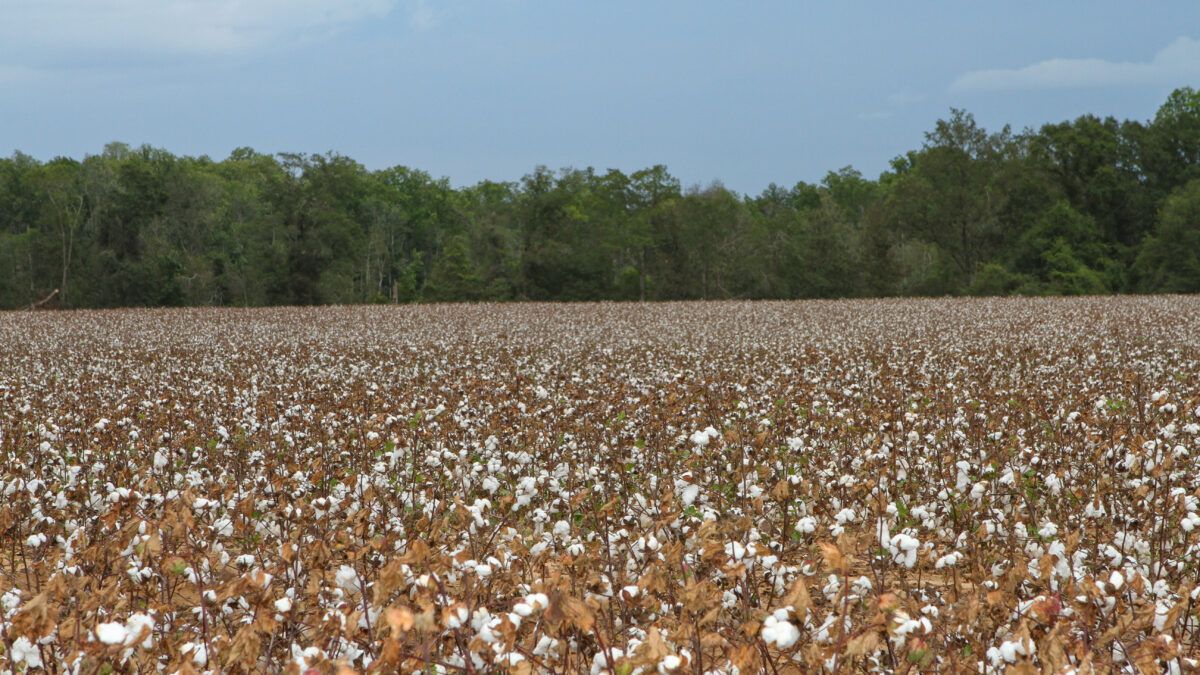
photo credit: Alabama Farmers Federation, Used with Permission
John Newton, Ph.D.
Former AFBF Economist
In 2014, the most recent year for which statistics are available, more than 50% of cropland and 25% of pastureland was rented, according to USDA’s Tenure, Ownership, and Transition of Agricultural Land survey. Combined, nearly 40% of agricultural land was rented that year. Rental agreements are generally made in the fall of the year before planting and the use of cash rental agreements is more prominent in areas with a high concentration of grain, oilseed or cotton production. Nearly 70% of all leasing agreements are fixed cash rental agreements, for which the rental rate is not based on crop productivity.
During 2020, the average cash rental rate for cropland was $139 per acre, down $1 per acre, or 0.7%, from 2019, according to USDA’s most recent August Cash Rents survey. Across the U.S., cash rental rates for cropland were the highest in areas with high crop productivity. Nearly 70% of the counties across Illinois and Iowa had cash rental rates above $200 per acre. At $294 per acre, Macon County, Illinois, had the highest cash rental rates in the country, and eight out of the top 10 counties in the U.S. with the highest rental rates were in Illinois. Grundy County, Iowa, had the highest rental rate in the state at $272 per acre.
Lower expected productivity and revenue per acre kept rental rates significantly lower outside of the Corn Belt. For example, in portions of Texas, such as Kimble, Webb and Sutton counties, the average cropland rental rates were less than $10 per acre.
The average cash rental rate for irrigated cropland was $216 per acre, down $4 per acre, or 2%, from the prior year. Irrigated cropland rental rates were the highest in areas with high concentrations of fruit, vegetable and tree nut production. In Ventura County, California, the average cash rental rate for irrigated cropland was the highest in the country at $2,550 per acre. Monterrey County, California, had the second-highest rental rate at $2,220 per acre. Figures 1 through 3 highlight the average county cash rental rate for cropland, cash rents for irrigated cropland and the year-over-year change in cropland cash rents for 2020.
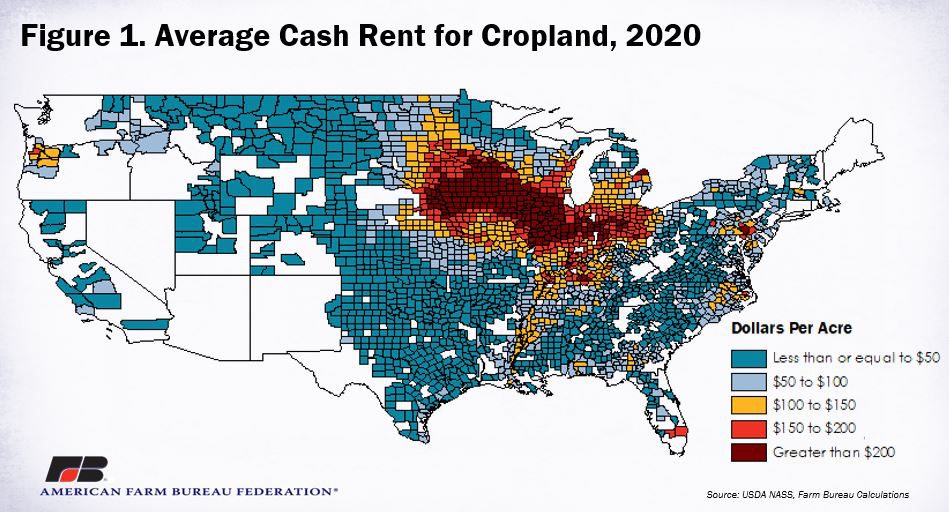
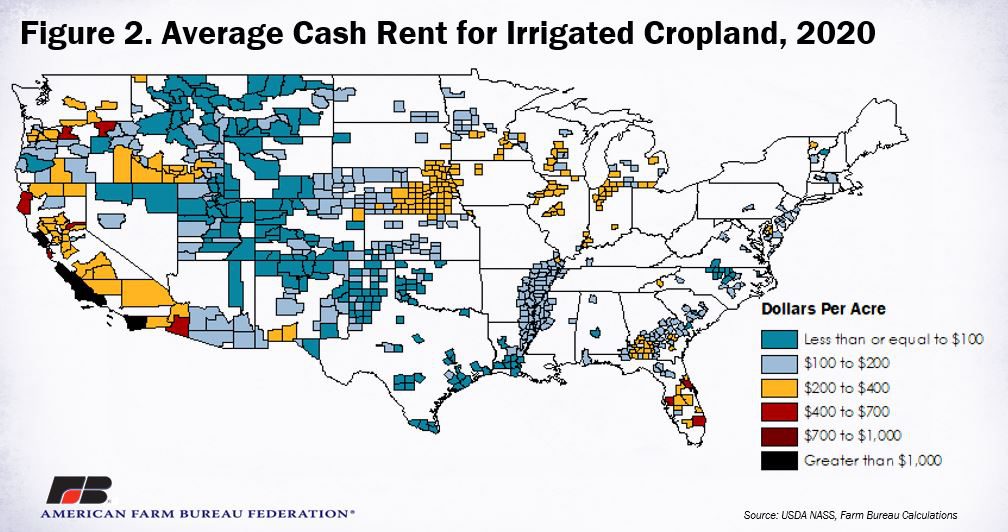
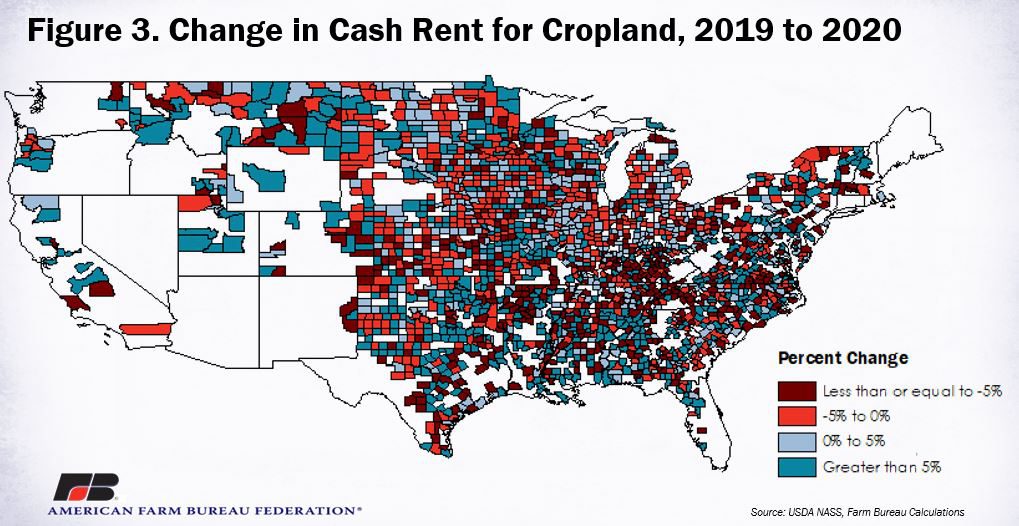
For pastureland, the average pasture rental rate was $13 per acre, unchanged from 2019. Across the U.S., pasture rental rates ranged from less than $10 per acre across much of the Western U.S. to more than $80 per acre in portions of Illinois and Iowa. Pasture ground across portions of Appalachia was also among the highest in the country, and well above the national average. Tillamook County, Oregon, and Snohomish County, Washington, led the country with an average cash rental rate of $105 per acre for pasture. Figures 3 and 4 highlight the average county cash rental rate for pasture during 2020 and the year-over-year change.
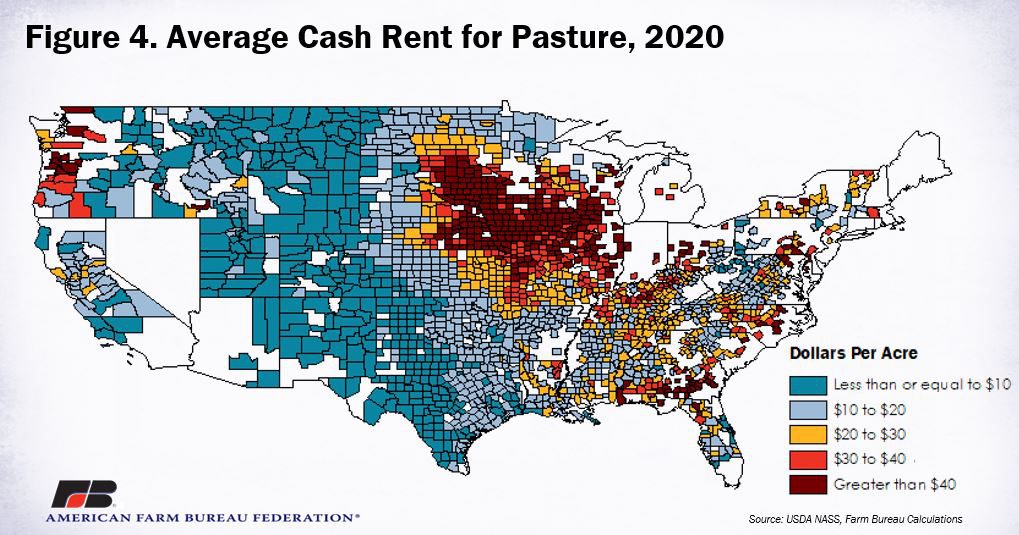
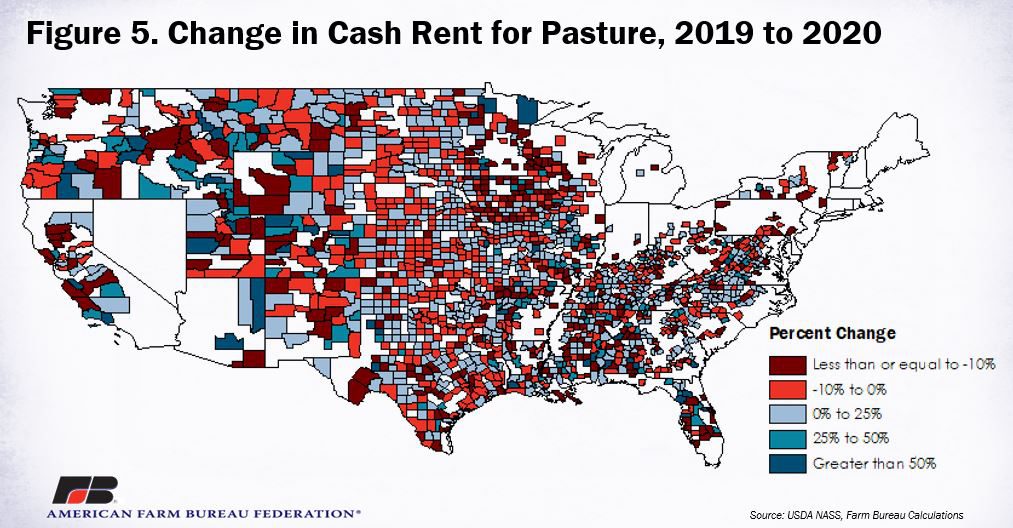
Summary
For the most part, farmers use a fixed cash rental rate agreement to rent cropland. During 2020, the average cash rental rates for cropland, irrigated cropland and pastureland were $139 per acre, $216 per acre and $13 per acre, respectively. These rates were mostly in line with prior-year levels.
The stability in cash rental rates is likely due to a variety of factors including Market Facilitation Program payments, designed to help farmers recover from retaliatory tariffs, ad hoc disaster aid to help producers impacted by wildfires, hurricanes and flooding in recent years, and increased off-farm income. All of these factors allow farmers to remain competitive when bidding for cash lease agreements.
Moving into 2021, the farm economic outlook is uncertain. Off-farm income is certain to be lower given the high levels of unemployment following COVID-19. However, ad hoc support through the Coronavirus Food Assistance Program for livestock, specialty livestock, specialty crops, non-specialty crops, dairy, acquaculture, nursery and floraculture producers could help farmers remain competitive when bidding for cash rental agreements this fall and into the spring.
Trending Topics
VIEW ALL